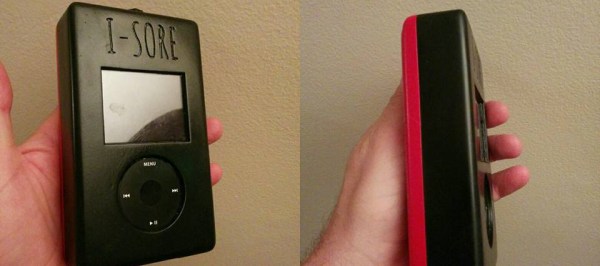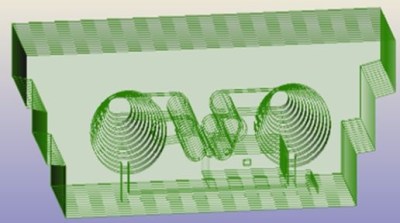Remember those times we all said that we wouldn’t mind it if the iPod was three times as thick but could store a lot more songs and the battery lasted forever? Well, the I-Sore will let us truly consider our stance on the subject.
The iSore would have definitely made some of us the coolest kids on the yard in Jr. High (or at the engineering office) in the 00’s. At first glance we assumed it would be one of those fancy single board computers packaged with a big hard drive masquerading as an iPod. We were surprised to discover that [jimbone] was performing a classic iPod hack.
The ipod’s back is pried off and discarded. A ZIF to SATA adapter connects it to a significantly larger hard drive. The basic battery is replaced with an 8Ah pack. The USB ports are broken out. For the case there are a few options. There’s a 3D printed case, a wooden case, and even one that looks like a Lovecraftian horror.
[jimbone] claims 100 hours of playtime on a single charge. He hasn’t claimed bulking up a bit from carrying it around, but we can make our guesses.





 The case is made out of plywood: many, many layers of plywood. Each layer of plywood was cut out using a laser cutter. Unlike most speaker cabinets that have a distinct boxy enclosure, this unit is mostly solid with cutouts in each layer only where voids were designed to be. [decpower] tried to replicate the Bose Wave Radio internal sound passages. Up top a dock slot complete with a 30-pin connector makes connecting an iPod super simple.
The case is made out of plywood: many, many layers of plywood. Each layer of plywood was cut out using a laser cutter. Unlike most speaker cabinets that have a distinct boxy enclosure, this unit is mostly solid with cutouts in each layer only where voids were designed to be. [decpower] tried to replicate the Bose Wave Radio internal sound passages. Up top a dock slot complete with a 30-pin connector makes connecting an iPod super simple.














